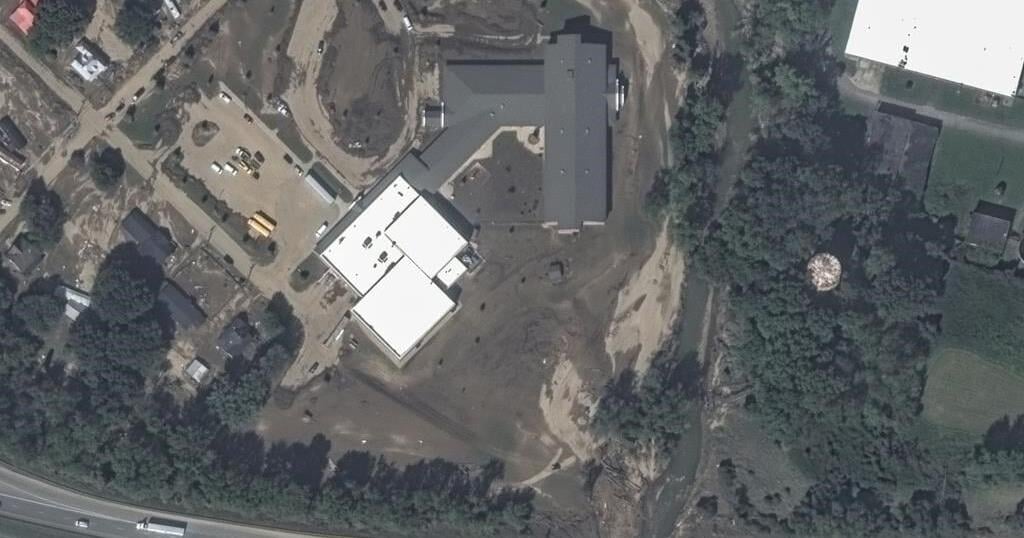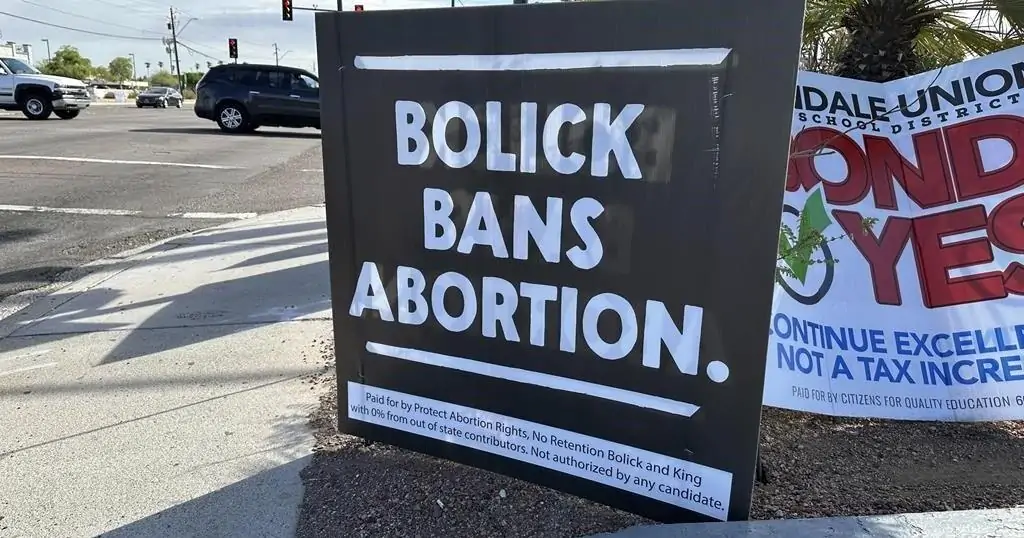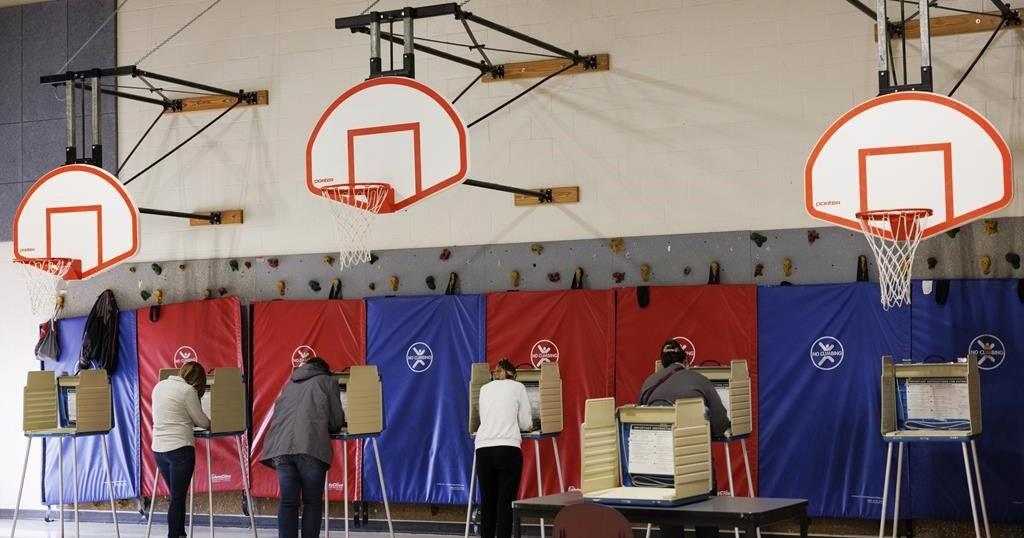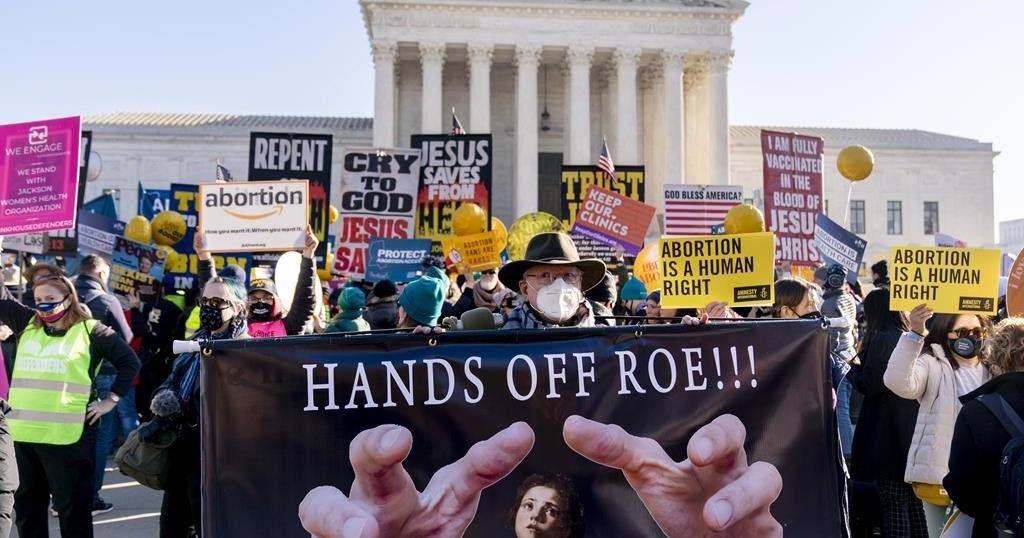BLACK MOUNTAIN, N.C. (AP) — Sarah Vekasi is a potter who runs a store in Black Mountain, North Carolina, called Sarah Sunshine Pottery, named after her normally bubbly personality. But these days she’s struggling with the trauma of Hurricane Helene and uncertainty about the future of her business.
“All I can say is that I’m alive. I’m not doing great. I’m not doing good. But I’m extremely grateful to be alive, especially when so many are not,” Vekasi said.
One thing that makes her feel a little better is the fellowship of the daily town meeting at the square.
“It’s incredible being able to meet in person,” said Vekasi, who was cut off by impassible roads for days. At Wednesday’s session more than 150 people gathered as local leaders stood atop a picnic table shouting updates.
In the midst of the devastating destruction left by the deadliest hurricane to hit the mainland U.S. since Katrina, human connections are giving the survivors hope in western North Carolina. While government cargo planes brought food and water into the hardest-hit areas and rescue crews waded through creeks searching for survivors, those who made it through the storm, whose death toll has topped 180, were leaning on one another.
Martha Sullivan, also at the town meeting, was taking careful notes so she could share the information — roads reopened, progress in getting power restored, work on trying to get water flowing again — with others.
Sullivan, who has lived in Black Mountain for 43 years, said her children invited her to come to Charlotte after the storm, but she wants to stay in her community and look after her neighbors.
“I’m going to stay as long as I feel like I’m being useful,” Sullivan said.
Helping one another in the hardest-hit areas
In remote mountain areas, helicopters hoisted the stranded to safety while search crews moved toppled trees so they could look door to door for survivors. In some places, homes teetered on hillsides and washed-out riverbanks.
Electricity is being slowly restored, as the number of homes and businesses without power dipped below 1 million for the first time since last weekend, according to poweroutage.us. Most of the outages are in the Carolinas and Georgia, where Helene struck after barreling over Florida’s Gulf Coast as a Category 4 hurricane. Deaths have been reported in Florida, Georgia, Tennessee and Virginia, in addition to the Carolinas.
Robin Wynn lost power at her Asheville home early Friday and was able to grab a bag of canned goods and water before getting to a shelter despite water up to her knees.
“I didn’t know where I was going, didn’t know what was going to happen next. But I got out and I’m alive,” Wynn said on Wednesday.
Now that she’s back home, her neighbors have been watching out for one another. Plenty of people have come around to make sure everyone has a hot meal and water, she said.
Eric Williamson, who works at First Baptist Church in Hendersonville, normally makes home visits to members who can’t physically get to church. This week, he’s their lifeline, delivering food that meets dietary restrictions and tossing out food that had spoiled.
Beyond checking in on the essentials, he says it’s important to just socialize with folks in a moment like this to help them know they aren’t alone.
He has a handwritten list of everyone he needs to visit. “They don’t have telephone service, even if they have a landline, a lot of that isn’t working,” Williamson said. “So we’re bringing them food and water, but also just bringing them a smile and a prayer with them just to give them comfort.”
Volunteers in Asheville gathered on Wednesday before going out to help find people who have been unreachable because of phone and internet outages. They took along boxes of drinking water and instructions to return in person with their results.
Even notifying relatives of people who died in the storm has been difficult.
“That has been our challenge, quite honestly, is no cell service, no way to reach out to next of kin,” said Avril Pinder, an official in Buncombe County where at least 61 people have died. “We have a confirmed body count, but we don’t have identifications on everyone or next-of-kin notifications.”
Thursday marks the seventh day of search and rescue operations, Pinder said, adding the county doesn’t have an official tally of people who are unaccounted for or missing.
“We’re continuing to find people. We know we have pockets of people who are isolated due to landslides and bridges out,” she said. “So they are disconnected but not missing.”
Biden and Harris get a firsthand look
President Joe Biden flew over the devastation in North and South Carolina, getting a firsthand look at the mess left by a storm that now has killed at least 189 people.
Speaking afterwards in Raleigh, North Carolina, Biden praised the Democratic governor of North Carolina and the Republican governor of South Carolina for their responses to the storm, saying that in the wake of disasters, “we put politics aside.”
“Our job is to help as many people as we can as quickly as we can and as thoroughly as we can,” he said.
That includes a commitment from the federal government to foot the bill for debris removal and emergency protective measures for six months. The money will address the impacts of landslides and flooding and will cover costs of first responders, search and rescue teams, shelters, and mass feeding.
“We’re not leaving until you’re back on your feet completely,” Biden said.
Vice President Kamala Harris traveled to neighboring Georgia, where she said the president had approved a request to pick up the tab for similar emergency aid there for three months.
Biden plans on traveling to disaster areas in Florida and Georgia on Thursday.
Devastation from Florida to Tennessee
Employees at a plastics factory in rural Tennessee who kept working last week until water flooded their parking lot and power went out at the plant were among those killed. The floodwaters swept 11 workers away, and only five were rescued. Two are confirmed dead.
Tennessee state authorities said they are investigating the company that owns the factory after some employees said they weren’t allowed to leave in time to avoid the storm’s impact.
Hospitals and health care organizations in the Southeast mostly stayed open despite dealing with blackouts, wind damage, supply issues and flooding. Many hospitals halted elective procedures, while only a few closed completely.
In Florida, officials were turning to “low-risk” state prisoners to help clear the mountains of debris left behind.
“Department of Corrections, they do prison labor anyways. So they’re bringing them to do debris removal,” Gov. Ron DeSantis told reporters on Wednesday.
___
Verduzco reported from Swannanoa, North Carolina, and Peterson from Hendersonville, North Carolina. Contributing to this report were Associated Press journalists Colleen Long in Raleigh, North Carolina; Kate Payne in Madiera Beach, Fla.; John Raby in Charleston, West Virginia; John Seewer in Toledo, Ohio; Jonathan Mattise in Nashville, Tennessee; Michael Kunzelman in College Park, Maryland; and Cedar Attanasio and Jim Mustian in New York.

























